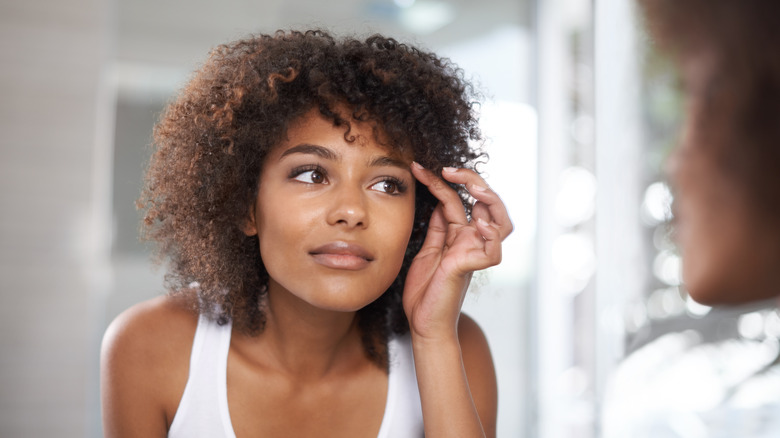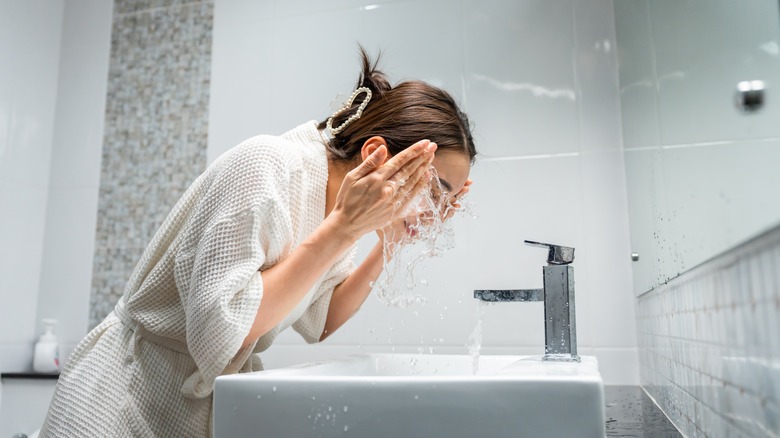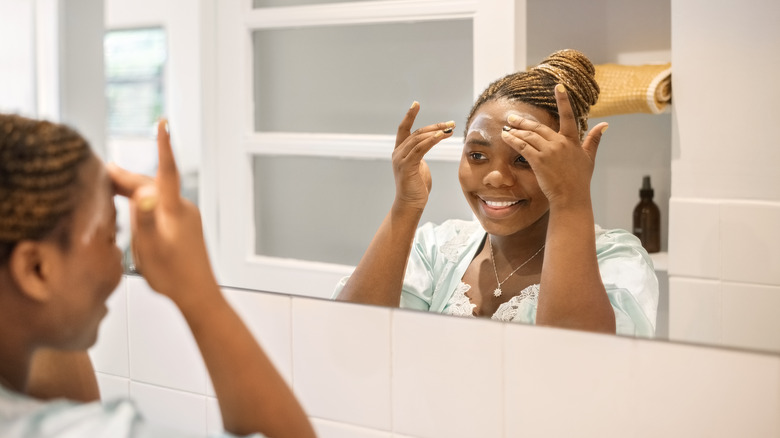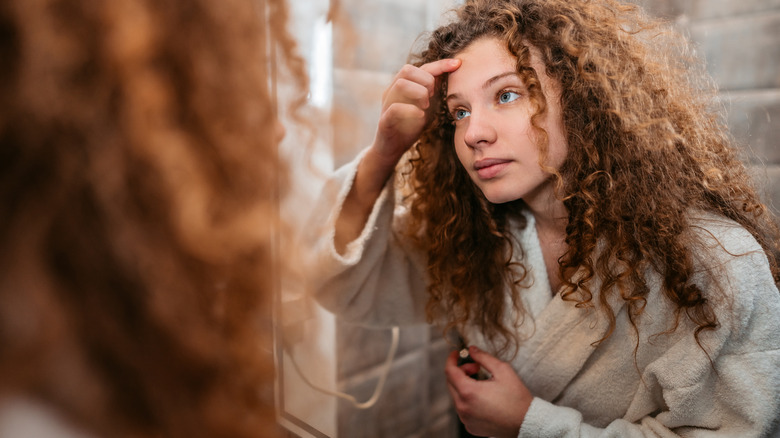How To Get Rid Of Stubborn Eyebrow Pimples
If you deal with acne, you know how annoying and painful eyebrow pimples can be. But unfortunately the hairs that frame our face are as prone to zits as anywhere else.
Experts at Healthline explain that acne is often caused by excess oil (sebum) and bacteria trapped in the hair follicles on your face. This is especially true for around the eyebrows, whether there's plenty of hair and oil in one area. As board-certified dermatologist Craig Kraffert told Byrdie, "In certain circumstances, oil gland activity in the T-zone area may be higher than elsewhere on the skin, and with that activity may come increased incidence and severity of breakouts in acne-prone individuals." And if you have bangs, this might even reign more true to you.
Pimples may also form as a result of ingrown hairs, which can occur after plucking, waxing, or shaving your brows. Ingrown hairs happen when hair is trapped under the skin and starts to grow, trapping dead skin and bacteria in the hair follicle and possibly turning into a pimple. Additionally, as with other areas of your face, using unclean makeup applicators can lead to acne breakouts, even on your brows. By trying to cover up pimples around your brows, you could potentially be making them worse. No matter what's causing your eyebrow breakouts, there are steps you can take to treat them and prevent them from getting worse.
Wash your face regularly
You may accidentally be neglecting your brows when you normally wash your face, so make sure you lather up your brows to remove excess oil and dirt. The American Academy of Dermatology recommends washing your face twice a day – once in the morning and once at night, as well as after any activities that cause heavy sweating. If you use a lot of brow product, like pomade or brow pencil, some experts suggest double cleansing the hairs with micellar water or another makeup remover before going in with your regular cleanser. It may take some time for your skin to clear up, but consistency is key when treating acne.
Apply a spot treatment
After cleansing, you'll want to use your acne-fighting ingredients to combat your pimples. Benzoyl peroxide and salicylic acid are among the most common over-the-counter options available for this. Benzoyl peroxide aims to reduce acne-causing bacteria and inflammation but can sometimes leave the skin feeling dry or irritated. Salicylic acid is known to help exfoliate the skin and dissolve dead skin cells that clog the pores. Using salicylic acid in your skincare routine may cause slight skin irritation, so use a little at a time if it's your first time trying it. Both skincare options are found in creams, ointments, gels, or in cleansers. You can apply a dab of salicylic acid gel to your brow breakouts on a regular basis to treat any existing pimples.
If your acne is persistent and doesn't respond well to over-the-counter remedies, consulting a dermatologist may help you determine exactly which type of acne you have and what your skin needs. Per Byrdie, once your eyebrow pimples have vanished, it may be a good idea to incorporate a regular chemical exfoliant to prevent new blemishes from forming.
Avoid picking or popping
When you notice a glaring pimple in the mirror, it's definitely tempting to pick at it or pop it. According to the American Academy of Dermatology, popping your pimples risks pushing the gunk deeper into the skin and increasing inflammation. Additionally, you risk transferring bacteria and dirt from your hands and fingernails into your skin, making the acne worse. It's a good idea to leave the pimples alone and consistently care for your skin with cleansers and spot treatments.



